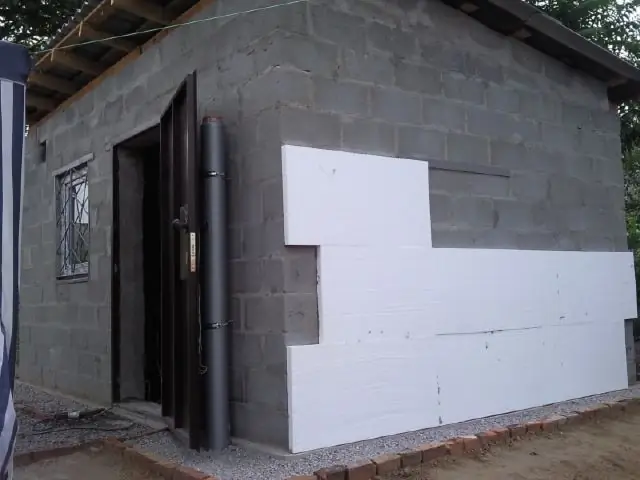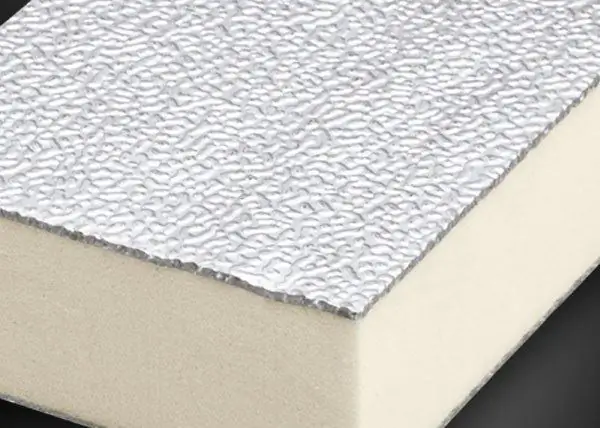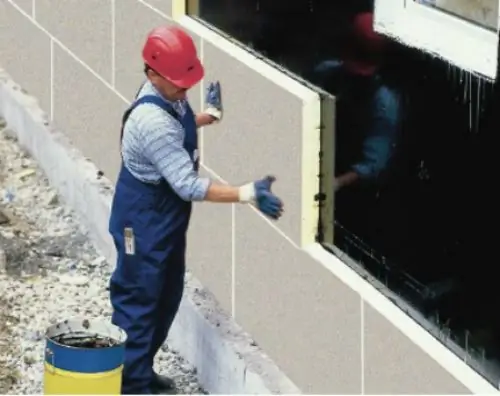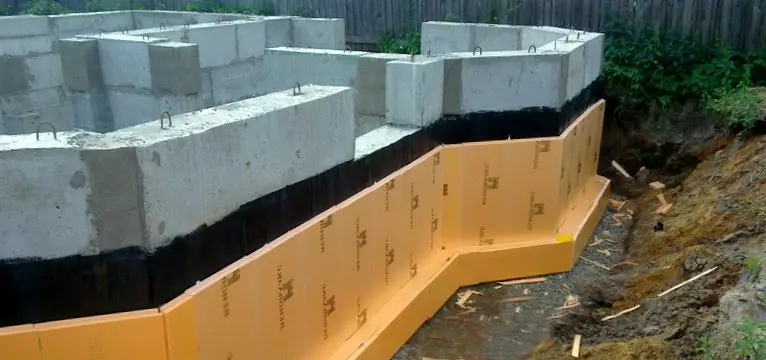Polyurethane foam boards are successfully used today for thermal insulation of roofs, floors, ceilings of buildings, internal and external walls of houses. The use of these panels can significantly reduce the thickness of the walls being built. This reduces the cost of purchasing expensive building materials, and also reduces heating costs.

Characteristics of polyurethane foam boards
The panels have good technical characteristics, their thermal conductivity coefficient is 0.019-0.028 W/mK. It is much higher than that of concrete and brick (about 10 times).
Polyurethane foam insulation in the boards is not afraid of temperature changes, you can work with it in any weather conditions. This is different from liquid polyurethane foam, which is sprayed from cylinders.
Polyurethane foam slabs are lightweight, which reduces the load on the foundation when using thismaterial.
Slabs are made from rigid polyurethane foam with a closed cell structure. They are simple and covered with kraft paper, fiberglass cloth, foil, armofol. The coating (one-sided and two-sided) increases the strength of the panels, protects them from ultraviolet radiation.
Polyurethane foam boards have a smooth surface, so the entire surface sheathed with this insulator will be flat. They can be used not only for insulation, but also when installing underfloor heating, and also as a base for plaster.

Varieties of material
There are three types of polyurethane foam:
- Open cell. The structure of the material consists of interconnected open cells. This type of polyurethane foam has the best heat saving performance. Also, this insulation absorbs excess moisture, and when it drops sharply in the composition of the air, it gives it away. In a room where the walls are covered with this material, it is not too humid or, conversely, dry. The ability to quickly absorb moisture is both an advantage and a disadvantage (in some cases). If there is too much moisture, and the air temperature drops below zero, the wet insulation begins to freeze and collapse. Therefore, open-cell polyurethane foam is used only for covering surfaces indoors, where the temperature does not drop to zero. This type of polyurethane foam is inexpensive.
- Closed cell. The material also consists of cells, but they are isolated from each other. This property does not allow it to absorb moisture,Therefore, it is used for outdoor work. But it is this quality that is an advantage if it is necessary to insulate the house from the outside. The material can withstand not only moisture, but even rain and snow. The disadvantage of the material is the high cost.
- Leaf. Affordable material with good heat saving performance. It is used mainly for interior work. If external walls are insulated with these plates, then it is necessary to further isolate them from moisture. The thickness of the plates can be from 2 to 10 centimeters, they can be installed independently. Installation of plates does not take much time and does not require the use of special equipment. The service life of the insulation is up to 20 years.
Benefits
The popularity of polyurethane foam boards for insulation is understandable. The material has high rates of sound insulation and thermal insulation. Unique waterproofing properties allow polyurethane foam to resist rotting, fungus formation, and large temperature changes. The material does not cause allergies, which is also important when using it in residential areas.
The light weight of polyurethane foam does not cause load on the frame of the entire structure. The material can take any desired shape, this property allows it to be used for the manufacture of mattresses, furniture upholstery.
Polyurethane foam boards are easy to install and process, they are easy to cut, drill, saw. Durable, retain their thermal insulation properties without loss of quality up to fifty years. They can be dismantled and used elsewhere.

Flaws
Polyurethane foam can break down when exposed to ultraviolet light. To protect it from the sun's rays, you can paint or apply plaster.
Another disadvantage of the material is that it heats up quickly. High temperature will not cause it to ignite, but the material may begin to smolder. In those places where the surface can heat up, it is better to use a different insulation.
Installation of heat insulator
Most often, PPU panels insulate the internal and external walls of buildings. It is convenient to use foam boards with a size of 600 × 1200.
First, the surface is cleaned of dirt and dust, then all cracks are covered with cement mortar and primed. The plates are fixed on the wall with special glue or bituminous mastic.

To insulate an apartment building with polyurethane foam boards (foam is its analogue, but mainly used for outdoor work), plastic dowels are used. In order for the plates to lie flat on the surface, they are pressed against the wall, the installation accuracy is checked, and then through holes are made with a puncher. Make sure the drill goes through the slab and into the wall.
Holes must be made in the middle and along the edges of the panel (departing from them by 10 cm). Next, it remains to insert the dowels into the holes, and then nail the panels to the wall.

Scope of application
Polyurethane foam is used in the production of household appliances (refrigerators, freezerscameras), as well as for the isolation of special mobile equipment (refrigerators, tankers).
Roofs, ventilation ducts, attics, basements, exterior walls of residential and industrial buildings are insulated with this material.






